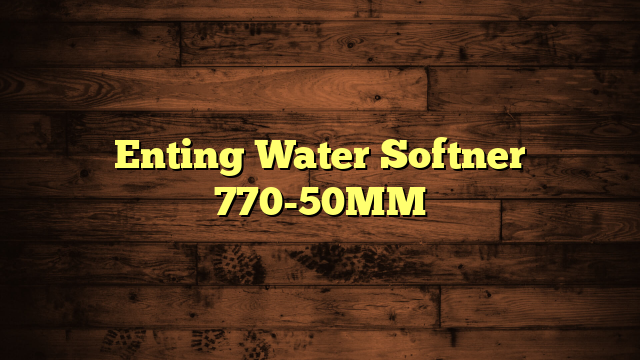How to Put Softner for Hard Water
It's funny how you can go years without realizing the impact hard water has on your home until you notice stubborn stains on your fixtures. If you're considering installing a water softener, knowing the right steps can make the process smoother and more effective. You'll want to assess your water usage and select the appropriate system, but there's more to it than just that. Understanding how to connect and maintain the unit can greatly enhance your water quality. So, what's the first step you should take to guarantee a successful installation?
Key Takeaways
- Determine your household's water hardness level with a test kit to assess the need for a water softener.
- Choose the appropriate type of water softener based on your needs, such as salt-based or salt-free systems.
- Prepare for installation by gathering necessary tools and selecting a suitable location near the main water supply.
- Follow installation steps, including shutting off the water supply and connecting the softener to the inlet and outlet pipes.
- Regularly maintain the softener by checking salt levels, cleaning the resin bed, and testing water hardness for optimal performance.
Understanding Hard Water
Hard water is a common issue that affects about 85% of households in the United States. When you tap into your water supply, you mightn't realize that hard water causes various problems due to its high mineral content, primarily calcium and magnesium.
These minerals can accumulate in pipes, leading to clogs and reduced water flow. You might notice that your faucets and showerheads become less effective over time, as mineral buildup can create unsightly stains and even block water flow.
The effects of hard water don't stop there. In your home, it can lead to soap scum that clings to your dishes, shower doors, and even your skin. You might find that your laundry feels stiff or that your appliances, like dishwashers and washing machines, wear out faster.
Furthermore, hard water can decrease the efficiency of heating systems, costing you more in energy bills. Understanding these hard water effects and causes can help you recognize the importance of addressing this issue.
Taking the necessary steps to mitigate hard water can save you time, money, and the frustration of dealing with its consequences in your daily life.
Benefits of Water Softeners
When you install a water softener, you'll notice several immediate benefits that can make your daily life easier.
It boosts soap efficiency, meaning you'll use less soap for cleaning and bathing, while also extending the lifespan of your appliances.
Plus, you'll enjoy softer skin and hair, making your showers feel more luxurious and comfortable.
Improved Soap Efficiency
Using a water softener can greatly enhance the efficiency of your soap and detergents. When you soften your water, you reduce the amount of soap residue left behind after washing. This means your cleaning efforts become more effective, allowing you to use less soap while achieving better results.
Here's a quick comparison of cleaning efficiency with hard versus soft water:
| Water Type | Soap Usage |
|---|---|
| Hard Water | High (more soap needed) |
| Soft Water | Low (less soap needed) |
| Effect on Residue | Cleaning Efficiency |
| Hard Water | High soap residue |
| Soft Water | Minimal soap residue |
Extended Appliance Lifespan
Water softeners can greatly extend the lifespan of your appliances, as they prevent the buildup of scale and mineral deposits that often occur with hard water. When you use softened water, you're taking a significant step in appliance care.
Hard water can cause serious damage to dishwashers, washing machines, and even water heaters. Over time, the minerals in hard water accumulate, leading to clogs and inefficiencies that can shorten the life of your appliances.
By improving your water quality with a softener, you reduce the wear and tear on these machines. For instance, your dishwasher will clean more effectively, which means less chance of malfunction. Similarly, washing machines operate more smoothly, saving you from costly repairs or replacements.
Investing in a water softener not only enhances the performance of your appliances but also guarantees they run more efficiently. This efficiency translates into lower energy bills, as machines don't have to work as hard to overcome the challenges posed by hard water.
Ultimately, choosing to soften your water is a smart decision for prolonging the life of your valuable appliances.
Softer Skin and Hair
Experience the difference softened water can make for your skin and hair. When you switch to softened water, you'll notice significant improvements in both.
Hard water can strip your skin and hair of essential moisture, leaving them dry and lifeless. Softened water, on the other hand, enhances skin hydration and promotes hair nourishment, making your daily routine much more enjoyable.
Here are some key benefits of using a water softener:
- Improved skin hydration: Softened water helps retain moisture, making your skin feel supple and smooth.
- Enhanced hair nourishment: Your hair absorbs moisture better, resulting in softer, shinier locks that are easier to manage.
- Reduced skin irritation: Say goodbye to itchy, irritated skin, as softened water is gentler and less abrasive.
- Smoother shaving experience: Softened water allows for a closer shave, reducing razor bumps and irritation.
Choosing the Right Water Softener
Choosing the right water softener can make a significant difference in your home's water quality.
You'll want to take into account the various types available and guarantee you select one that fits your specific capacity and size needs.
Understanding these factors helps you make an informed decision that suits your lifestyle and water usage.
Types of Water Softeners
When it comes to softening hard water, finding the right type of water softener can make all the difference.
You'll want to evaluate your needs and preferences before deciding. Here are a few common types to help you choose:
- Salt-based systems: These are the most traditional option, using salt to remove calcium and magnesium ions from your water. They're effective but do require regular salt refills.
- Salt-free systems: These systems don't use salt, making them a great option if you're concerned about sodium intake. They condition the water instead of softening it.
- Magnetic softeners: These devices claim to alter the properties of hard water without adding chemicals. While some users report improvements, their effectiveness can vary.
- Dual-tank systems: If you have high water usage, these systems continuously soften water, so you never run out.
Choosing the right water softener involves understanding how each type works and what fits your lifestyle best.
Take your time to research, and you'll be on your way to enjoying softer water in no time!
Capacity and Size Considerations
Finding the right capacity and size for your water softener is essential for maximizing efficiency and performance. Before making a purchase, you'll want to assess your capacity requirements based on your household's water usage. This guarantees that your system can handle your needs without running out of soft water.
To help you determine the best fit, consider the following table:
| Household Size | Recommended Capacity (Grains) |
|---|---|
| 1-2 People | 20,000 – 30,000 |
| 3-4 People | 30,000 – 40,000 |
| 5-6 People | 40,000 – 50,000 |
| 7+ People | 50,000+ |
Keep size compatibility in mind as well. Your softener should fit comfortably in your designated space, whether it's a utility room or basement. Measure the area and guarantee there's enough room for maintenance access. By considering both capacity requirements and size compatibility, you'll choose a water softener that efficiently meets your household's demands while fitting your space perfectly. This thoughtful approach helps you avoid unnecessary costs and maintenance issues in the long run.
Tools and Materials Needed
To effectively soften hard water, you'll need a few essential tools and materials. Gathering these items beforehand will help streamline the process, ensuring you're well-prepared for installation.
Here's what you'll need:
- Water Testing Kit: This helps you determine the hardness level of your water, so you can choose the right softener.
- Installation Tools: Have a wrench, screwdriver, and pliers handy for connecting pipes and fittings.
- Salt or Potassium: Depending on your softener type, you'll need a suitable softening agent, salt for traditional systems, or potassium for a more eco-friendly option.
- Container for Salt: A dedicated container keeps your salt organized and makes refilling easier.
Once you have these tools and materials, you'll be ready to tackle the installation.
Remember, testing your water first is vital; it informs your choices and helps you understand how much softener you might need.
With the right preparation, you'll find the process much smoother, and your hard water woes will soon be a thing of the past!
Installation Steps Overview
Before you start the installation process, it's essential to familiarize yourself with the key steps involved. First, identify the location for your water softener, making sure it's close to your main water supply while considering drainage and power sources.
Next, check the system compatibility with your existing plumbing—this guarantees a smoother installation.
Once you've chosen a suitable spot, gather the necessary tools and materials you'll need. This includes wrenches, screwdrivers, and possibly a drill, depending on your installation techniques.
Plan your approach by visualizing how the water softener will connect to your plumbing, keeping in mind the inlet and outlet pipes.
Afterward, prepare the area by shutting off the water supply and draining the pipes. This step prevents unexpected spills during installation.
It's also wise to review the manufacturer's instructions specific to your water softener model; each one may have unique requirements.
Finally, verify you've got all the necessary fittings and connectors handy before getting started. Following these steps will set a solid foundation for a successful installation, making the process more efficient and less stressful.
Connecting the Water Softener
Connecting the water softener involves linking it to your home's plumbing system for ideal performance. Start by identifying your water source, usually the main water line. Make certain you have the right tools and materials ready for smooth plumbing connections.
Here's what you need to take into account:
- Location: Choose a spot near your water source to reduce installation complexity.
- Shut-off Valve: Install a shut-off valve to control water flow during maintenance.
- Bypass Valve: Think about adding a bypass valve to easily switch between softened and untreated water.
- Drain Line: Guarantee a proper drain line setup for the brine discharge when regenerating.
Once you've prepared, cut into your main line and connect the softener according to the manufacturer's instructions. Use high-quality fittings to guarantee a leak-proof connection.
After connecting, check for any leaks before turning the water back on. Proper plumbing connections are essential for the softener to work efficiently, so take your time to do it right.
With these steps in place, you'll be well on your way to enjoying the benefits of softened water throughout your home!
Testing Water Softness
After successfully installing your water softener, it's important to test the water hardness to verify the system is working effectively. You can do this through water testing, which provides a straightforward method to assess the softness measurement.
Start by collecting a sample of water from your tap.
There are several testing kits available, ranging from simple test strips to more advanced digital meters. If you're using test strips, dip one into the water sample and compare the resulting color with the provided scale. For digital meters, follow the manufacturer's instructions for accurate readings.
Once you get your hardness level, you'll know whether your water softener is functioning correctly. Ideally, you should see the hardness level drop considerably compared to pre-softened water. If it hasn't, it might indicate a need for adjustments or troubleshooting.
Regular testing is a smart practice. It not only helps you monitor your water quality but also verifies your system runs efficiently, saving you from potential issues down the line.
Maintenance Tips for Longevity
To guarantee your water softener lasts for years, regular maintenance is key. By establishing a maintenance schedule and performing routine checks, you can keep your water softener running efficiently.
Here are some essential tips to promote longevity:
- Check the salt levels: Regularly inspect the brine tank and keep it filled with salt to maintain peak performance.
- Clean the resin bed: Every six months, clean the resin bed to prevent buildup, which can hinder its ability to soften water.
- Inspect the system for leaks: Look for any signs of leakage around the unit, as even small leaks can lead to bigger problems over time.
- Test the water hardness: Periodically test your water hardness to guarantee your softener is functioning properly and adjust settings as needed.
Frequently Asked Questions
Can I Install a Water Softener Myself?
Yes, you can install a water softener yourself. Just follow the installation steps carefully and apply some DIY tips to guarantee everything's set up correctly. It'll save you money and give you a sense of accomplishment!
How Long Does a Water Softener Last?
Imagine a steadfast guardian for your home; a water softener typically lasts 10 to 15 years. Longevity factors like maintenance matter, so watch for replacement signs—like decreased efficiency or mineral buildup—to know when it's time.
Will a Water Softener Affect My Drinking Water?
A water softener can affect your drinking water by altering its mineral content. While it reduces hardness, it may also increase sodium levels. Always check your system's specifics to verify your water remains healthy and safe.
How Often Should I Add Salt to the Softener?
You'd think adding salt's a once-in-a-lifetime task. In reality, it's part of your maintenance schedule! Depending on usage, check monthly and use the right salt types to keep your softener running smoothly.
What Are the Signs My Water Softener Needs Maintenance?
You'll notice softener indicators like decreased water flow, soap not lathering, or scale buildup. If these signs appear, it's time to check maintenance frequency to guarantee your system runs smoothly and effectively.
Conclusion
Installing a water softener can transform your hard water woes into a revitalizing experience. With the right tools and steps, you can enjoy softer skin, cleaner dishes, and longer-lasting appliances. Yet, it's not just about the installation; regular maintenance guarantees your system runs efficiently, balancing convenience with responsibility. So, embrace the change, and remember that the effort you put in today will pay off in comfort and savings tomorrow. Your water, and your home, will thank you.







